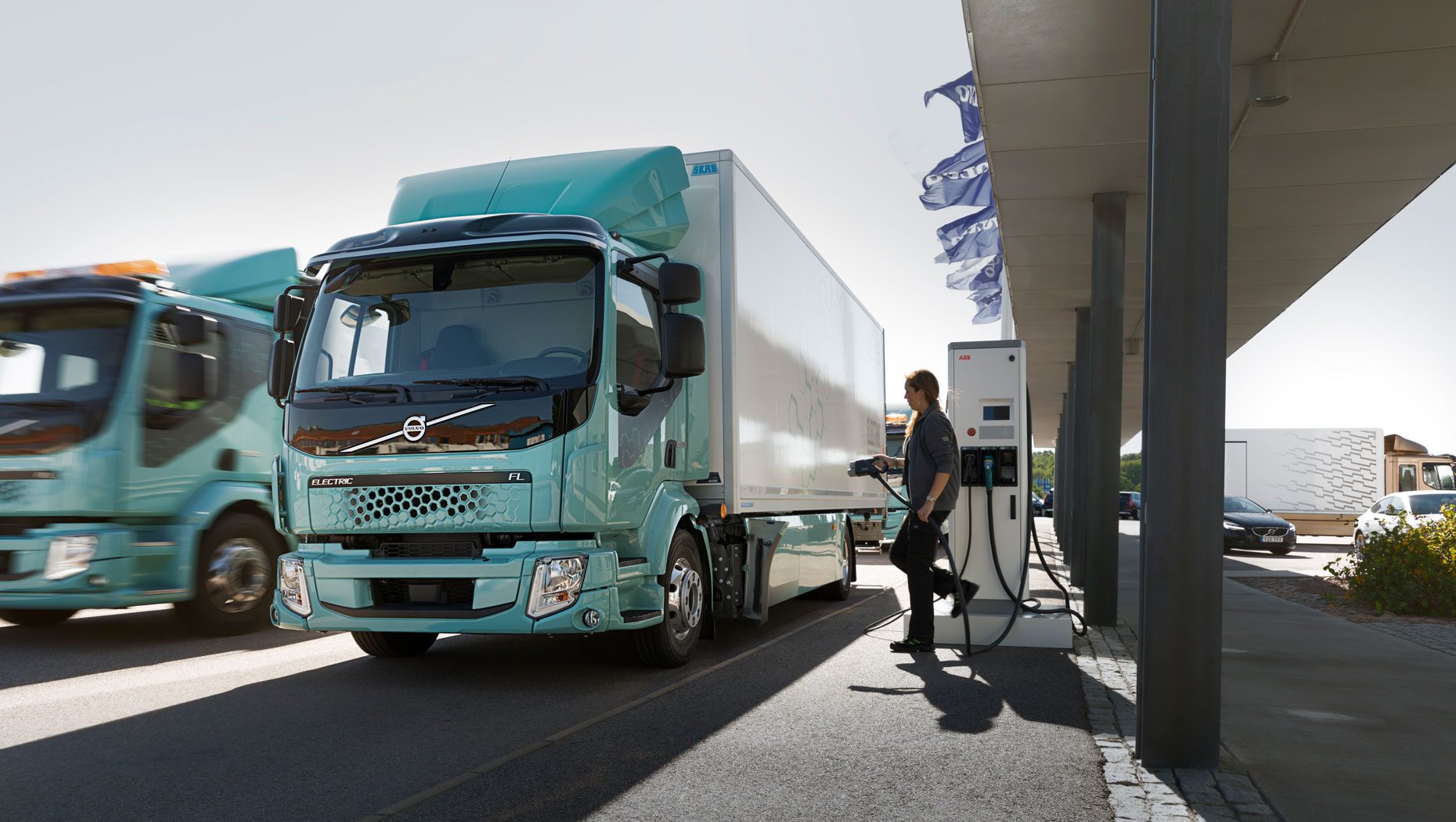Volvo Group is leading the way for the global shift to electric trucks
Volvo Trucks are using an electric truck model, which will benefit the environment and the driver.
On Ticker Climate this week, the Environment and Innovation Director of Volvo Trucks in Sweden, Lars Martensson, shared the latest details on the shift to electric.
Electric trucks in Australia
Logistics company Linfox will work with Volvo, to use their electric trucks in Australia. Volvo’s electric trucks are already used reguarly in Sweden, Europe and North America. Yet, Volvo will now bring its large heavy trucks to Australia.
As electric vehicle production ramps up worldwide, there is an increasing demand to adapt to this model.
How do they work?
In a boost for sustainability, the trucks are all battery-electric.
Electric vehicles (EVs) have an electric motor, instead of an internal combustion engine. The vehicle uses a large battery pack to power the electric motor.
In the case of an electric truck, it uses a computer to signal through to an inverter. The inverter releases electrons from the battery pack, that can be used by the electric motor.
Electric vehicles can be referred to as battery electric vehicles.
They emit no exhaust and do not contain any typical liquid fuel components, such as a fuel pump, fuel line, or fuel tank.
Another major advantage of electric motor-driven trucks is the ability to provide regenerative braking. Unlike diesel, an electric motor can recover energy by sending charging current back into the batteries, in a controlled process.
However, the truck’s battery has to be plugged into an electrical outlet or charging equipment. Most electric vehicles can go a similar distance to petrol or diesel vehicles. There does need to be regular charging stations along the way.
The Volvo trucks can be recharged overnight, at the home depots. For the remainder of the time, they can recharged during the trips. They have a driving range of up to 300km.
They will be used for local distribution, regional distribution, and construction.
“For example, in Europe, it will make up 50% of freight transport.”
Lars Martensson
https://twitter.com/tickerNEWSco/status/1414513827262042112?s=20
Why go electric?
The shift to electric helps to fight climate change and has significant benefits for the drivers’ health.
Traditionally trucks operate using diesel fuel. Diesel exhaust comes from engines burning diesel fuel. It is a complex mixture of gases, vapors, liquid aerosols, and particulate substances. These substances are the products of combustion.
The main chemical components of diesel exhaust emissions are gases and vapours. Gases and vapours are the gases found in air like nitrogen, oxygen, water vapour, and carbon dioxide.
There are also hazardous chemicals like nitrous oxide, nitrogen dioxide, sulphur dioxide, and carbon monoxide.
Fine particles known as diesel particulate matter are hazardous chemicals. They act like gas and stay airborne for long periods of time. They are extremely detrimental to the drivers’ health by penetrating deep into the lungs.
The shift to electric will also help to cut back on greenhouse emissions.
Cars, trucks, public transport, domestic flight, and shipping are the second-largest source of greenhouse gas pollution in Australia.
The sector emitted 102 million tonnes of carbon dioxide in 2018, representing 18% of Australia’s annual greenhouse gas pollution. Transport emissions increased the most as a percentage of any sector since 1990.
“There are emissions from diesel trucks, which cause pollution in terms of the cities and smog but also in terms of local pollution.”
“There are also fine particles which go deep into the lungs.”
Scott Hamilton
Ditch dependence on diesel imports
Diesel is crucial to Australia’s energy security as it underpins our critical infrastructure, transport sector, and important industries, such as mining and agriculture. It is also critical during an emergency for essential services.
Australia currently has only about 18 days of diesel fuel security. More than 90 per cent of petrol and diesel in Australia is imported from Singapore, South Korea, Japan, China, and the USA.
Australia is down to only a couple of oil refineries now, yet the Federal Government is using taxpayers dollars to keep them afloat.
“So much for ‘technology not taxes’ approach to energy policy,”
Scott Hamilton
We can learn from other countries and businesses. Power company Copel and the State of Parana, in Brazil, worked together to maximise transition to electric vehicles by investing in re-fuelling developments. This included commercial, residential, and government services.
Copel determined it could make more money from selling coffee at refueling stations than it would ever make from selling electricity for vehicles.
“With diesel fuel security sitting about 18 days and the rising price of oil, diversification in electric and other zero-emission power fuels is a no brainer. Helping save the plant is a bonus.”
“I think we are going to see the same rapid uptake of electric vehicles as we have seen with people putting solar PV on their roofs”
“Linfox is again showing leadership by driving these new clean technologies into the Australian market,”
Scott Hamilton
Government support
According to Martensson, the Swedish Government and Europe more broadly have been incredibly supportive of the electric movement.
To run effectively and efficiently in Australia, Volvo will require the support of the Government. There needs to be considerable investment into the research, development, and infrastructure.
The trucks require recharging stations and specific infrastructure to run efficently.
However, the exact plan and logistics for Volvo Trucks to operate in Australia hasn’t be revealed yet.
IN OTHER NEWS:
Volvo is going to work with battery company Northvolt to deliver Electric vehicles with a range of 1000km. The two companies will produce batteries with renewable energy to lower carbon emissions.
In addition, they will increase energy density by about 50% and their batteries will present a 1,000 Wh/l energy density.
Watch the full episode of Ticker Climate here:
Ticker Climate



 News3 days ago
News3 days ago


 Leaders3 days ago
Leaders3 days ago


 Shows3 days ago
Shows3 days ago


 News3 days ago
News3 days ago


 Docos5 days ago
Docos5 days ago


 Leaders4 days ago
Leaders4 days ago


 Leaders4 days ago
Leaders4 days ago


 News2 days ago
News2 days ago





